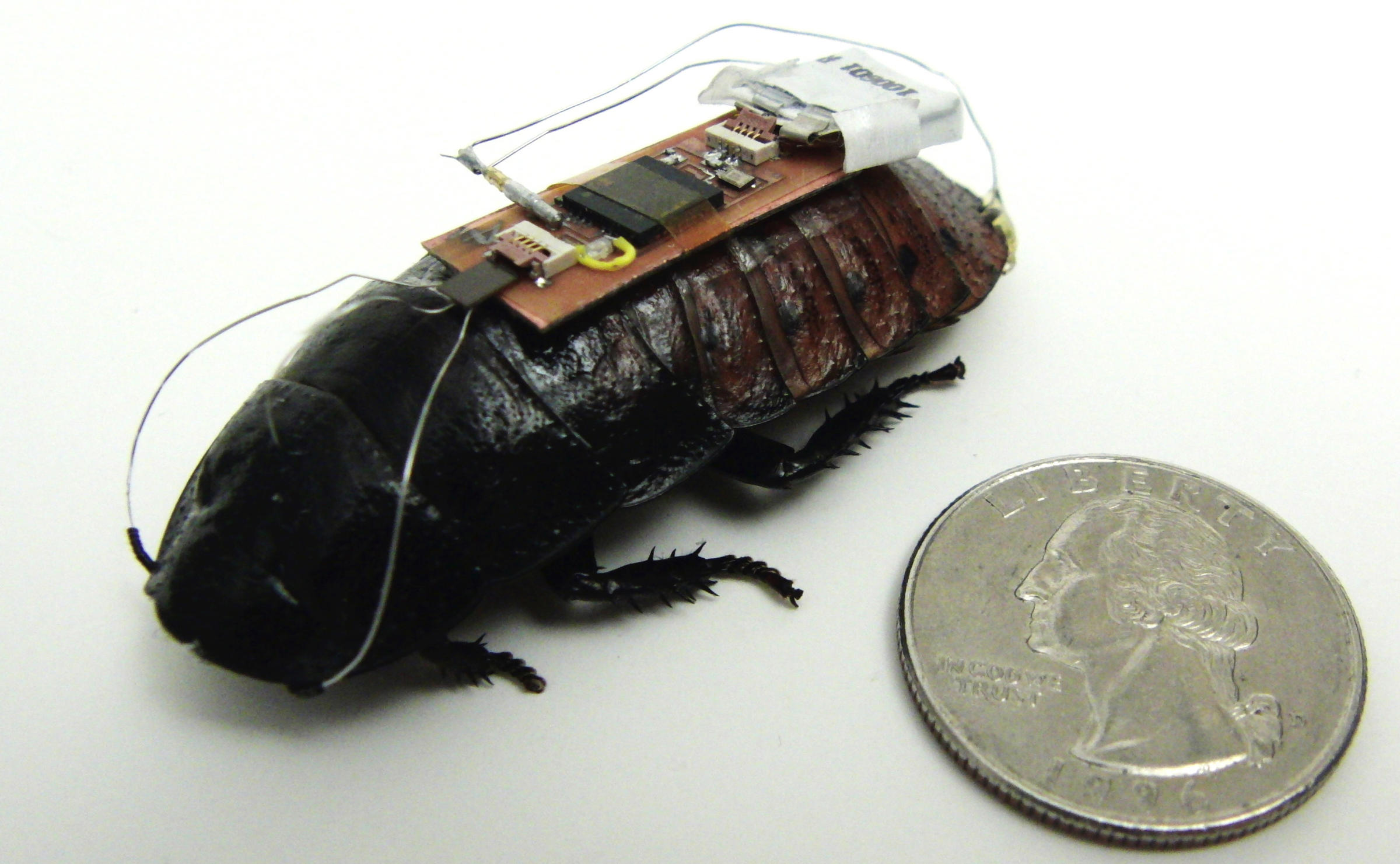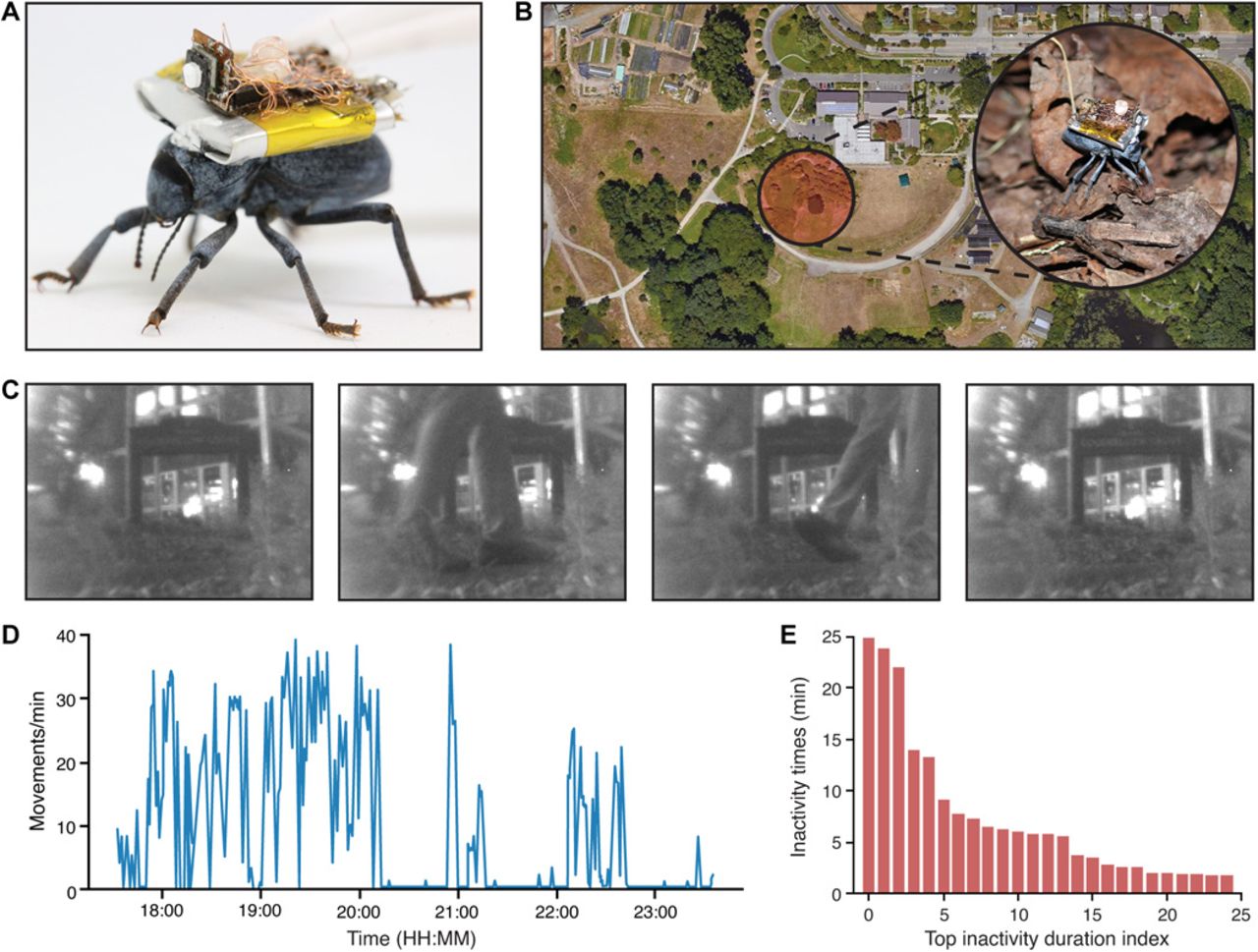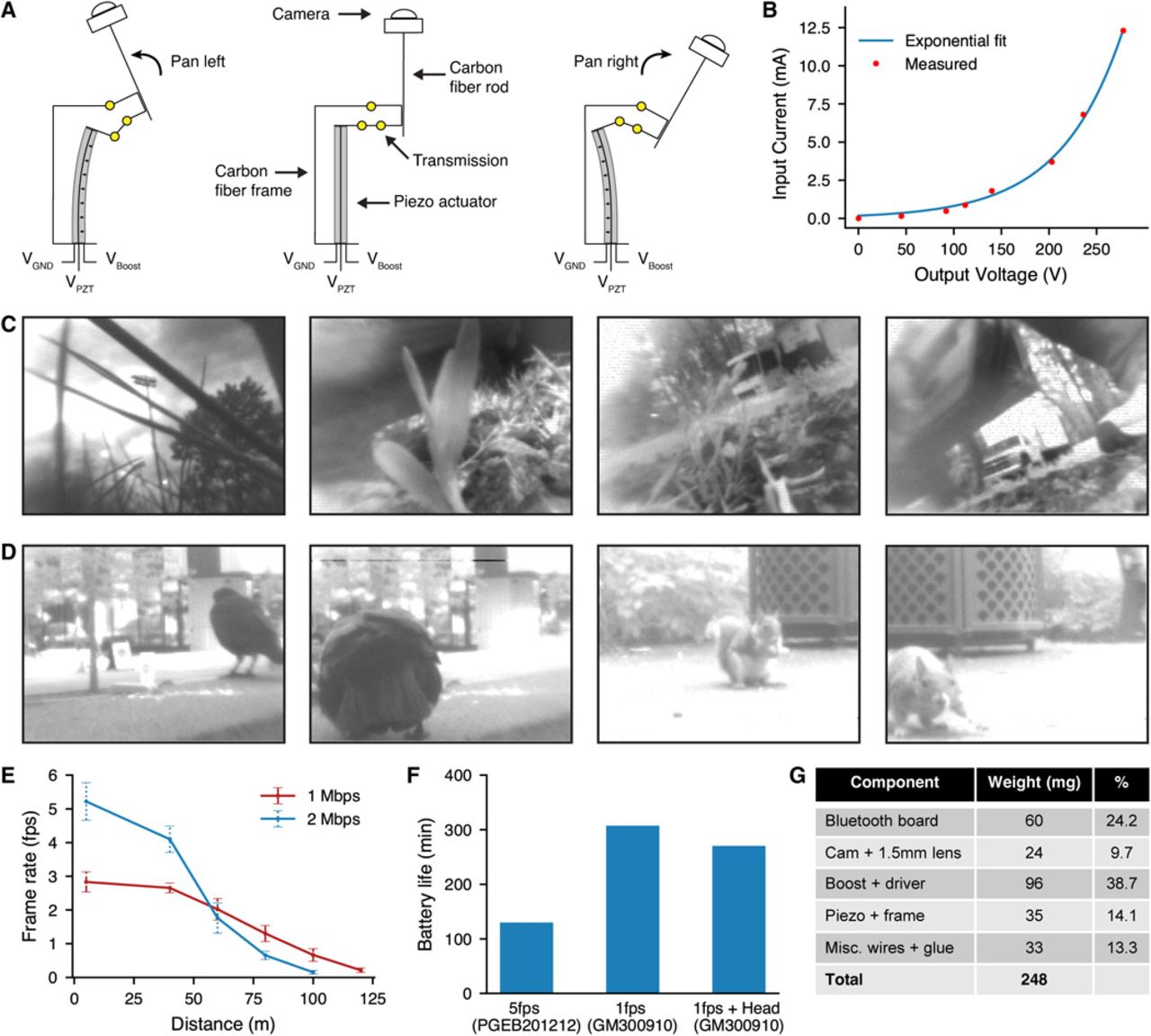
Researchers from the School of Computer Science and Engineering, Electrical and Engineering Departments at the University of Washington in Seattle have developed a conceptual design for a 248 mg video camera (plus a 0.5 g battery) that attaches to the beetle's back or microrobot.
Black and white video 1-5 fps with a resolution of up to 160 × 120 px is transmitted via Bluetooth at a distance of up to 120 meters. The lens rotates 60 °. Smartphone control.
Previously, scientists have experimented with remotely controlling beetles (2009) , moths (2008) and cockroaches (2012) by stimulating the brain with electrodes, so this is a very promising related development. In fact, now a camera module has been made for radio-controlled insects.

Cockroach radio module. Photo: University of North Carolina , 2012
Cockroach remote control is not just a science. DIY kits for medical surgery and electronics for mounting on a cockroach are already on the public sale .

DIY kit for installation on a cockroach

Operation on a cockroach at home
There are good results in experiments on implanting cells with biofuel in living insects to power electronics (see the scientific work of 2012 ), that is, all the elements of the puzzle on creating a spy beetle or cyborg cockroach with remote control add up ...
However, specifically the new video camera is powered not from a biocell, but from a 0.5 gram 10 mA battery. This is enough for 6 hours of work when installed on a regular black beetle. Of course, you can make a home-made mobile robot, but so far human development models cannot be compared in terms of maneuverability and power to real insects, whose design has been honed over millions of years of evolution.

Variants of a miniature wireless video camera for a black beetle and a mobile robot
Researchers had to start developing a new video camera from scratch, because no existing solutions are suitable. Even the smallest swallowed video cameras, which are filmed inside the human body, with batteries weigh more than 1 gram, which is too much for a beetle or cockroach.
Focusing on small size and efficiency, they started with a commercially available ultra-small CMOS sensor that is 2.3 mm wide and 6.7 mg in weight. They also chose a Bluetooth 5.0 chip (3mm wide, 6.8mg) and began experimenting with how to pair the two with a minimum of intermediate equipment to broadcast the camera signal.

Field trials of a beetle with a video camera
The working chamber also required a lens (20 mg) and an antenna, a 5 mm wire. An accelerometer was installed on the board so that the movement of the insect can be used to trigger the camera, minimizing excess footage from a dormant beetle or a stationary robot on recharge.

The last piece of the diagram is a mechanically controlled "head" weighing 35 mg and bringing the weight of the wireless camera to 84 mg. This is an off-the-shelf 60-degree drive that was developed by colleagues at the University of Washington for their miniature flying robots. Unfortunately, the piezoelectric drive requires a 96 mg boost converter. This is a huge cost, but the researchers took this step because they can't really control the beetle - and have to rotate the camera if necessary.
The research paper "Wireless Guided Vision for Living Insects and Robotic Insects " by Vikram Iyer, Ali Najafi, Johannes James, Sawyer Fuller and Shyamnat Gollakota from the University of Washington was published on July 15, 2020 in Science Robotics (doi: 10.1126 / scirobotics.abb0839).
To place such a video camera on a bee or a fly, additional optimization is required, because the same bumblebee lifts no more than 100-200 mg of the payload. The main limitation here is the power supply system, so it is advisable to use solar cells on the bumblebee.

PKI solutions for small and medium businesses
Contact us +7 (499) 678 2210, sales-ru@globalsign.com.